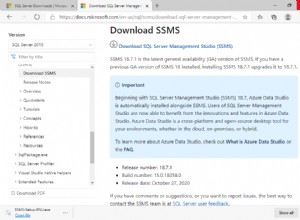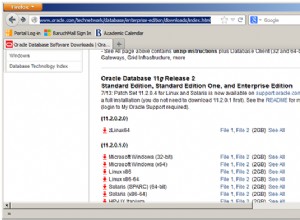Esta respuesta es para hash, password_hash() y password_verify() . Tanto para mysqli como para pdo. El enlace en la parte inferior tiene más enlaces y algo de lenguaje sobre sales y similares.
Es fundamental no utilizar datos proporcionados por el usuario directamente con selecciones e inserciones. Más bien, vincule los parámetros y llame a las declaraciones preparadas para Evite los ataques de inyección de sql . Las contraseñas nunca deben guardarse en claro (texto claro) en las bases de datos. Más bien, deben enviarse a través de hashes unidireccionales.
También tenga en cuenta. Esto muestra hash de registro y verificación de inicio de sesión. No es totalmente desarrollado funcionalidad que estoy tratando de empeñar en codecanyon por diez dólares ... de modo que muestre que ya existe un nuevo registro de una dirección de correo electrónico (el inicio de sesión), hace actualizaciones, eso sí. En ese caso, la inserción simplemente fallará debido a la clave única establecida en la base de datos. Le dejo eso a usted, el lector, para hacer la búsqueda y decir 'correo electrónico ya registrado'.
Esquema
CREATE TABLE `user_accounts2` (
`id` int(11) NOT NULL AUTO_INCREMENT,
`email` varchar(100) NOT NULL,
`password` varchar(255) NOT NULL,
PRIMARY KEY (`id`),
unique key(email) -- that better be the case
) ENGINE=InnoDB;
Después de ejecutar register.php y guardar un usuario, los datos podrían verse así:
select * from user_accounts2;
+----+-----------+--------------------------------------------------------------+
| id | email | password |
+----+-----------+--------------------------------------------------------------+
| 1 | [email protected] | $2y$10$U6.WR.tiOIYNGDWddfT7kevJU8uiz8KAkdxXpda9e1xuplhC/eTJS |
+----+-----------+--------------------------------------------------------------+
sección mysqli primero
registrar.php
<?php
mysqli_report(MYSQLI_REPORT_ALL);
error_reporting(E_ALL); // report all PHP errors
ini_set("display_errors", 1); // display them
session_start();
if(isset($_SESSION['userid'])!="") {
// you are already logged in as session has been set
header("Location: safe.php"); // note that this re-direct will at the top of that page
// ... and there to verify the session state so no tricks can be performed
// no tricks and gimmicks
}
if(isset($_POST['register'])) {
$email = $_POST['email'];
$ctPassword = $_POST['password']; // cleartext password from user
$hp=password_hash($ctPassword,PASSWORD_DEFAULT); // hashed password using cleartext one
// pretend the following is locked in a vault and loaded but hard coded here
$host="yourhostname";
$dbname="dbname";
$user="dbuser";
$pwd="password";
$port=3306; // comes along for the ride so I don't need to look up param order below
// end pretend
try {
$mysqli= new mysqli($host, $user, $pwd, $dbname,$port);
if ($mysqli->connect_error) {
die('Connect Error (' . $mysqli->connect_errno . ') ' . $mysqli->connect_error);
}
//echo "I am connected and feel happy.<br/>";
$query = "INSERT INTO user_accounts2(email,password) VALUES (?,?)";
$stmt = $mysqli->prepare($query);
// note the 2 s's below, s is for string
$stmt->bind_param("ss", $email,$hp); // never ever use non-sanitized user supplied data. Bind it
$stmt->execute();
// password is saved as hashed, will be verified on login page with password_verify()
$iLastInsertId=$mysqli->insert_id; // do something special with this (or not)
// redirect to some login page (for now you just sit here)
$stmt->close();
$mysqli->close();
} catch (mysqli_sql_exception $e) {
throw $e;
}
}
?>
<html>
<head>
<title>Register new user</title>
</head>
<body>
<div id="reg-form">
<form method="post">
<table>
<tr>
<td><input type="email" name="email" placeholder="Email" required /></td>
</tr>
<tr>
<td><input type="password" name="password" placeholder="Password" required /></td>
</tr>
<tr>
<td><button type="submit" name="register">Register</button></td>
</tr>
<tr>
<td><a href="index.php">Normal Login In Here</a></td>
</tr>
</table>
</form>
</div>
</body>
</html>
iniciar sesión.php
<?php
mysqli_report(MYSQLI_REPORT_ALL);
error_reporting(E_ALL); // report all PHP errors
ini_set("display_errors", 1); // display them
session_start();
if(isset($_SESSION['userid'])!="") {
// you are already logged in as session has been set
header("Location: safe.php"); // note that this re-direct will at the top of that page
// ... and there to verify the session state so no tricks can be performed
// no tricks and gimmicks
}
if(isset($_POST['login'])) {
$email = $_POST['email'];
$ctPassword = $_POST['password']; // cleartext password from user
// pretend the following is locked in a vault and loaded but hard coded here
$host="yourhostname";
$dbname="dbname";
$user="dbuser";
$pwd="password";
$port=3306; // comes along for the ride so I don't need to look up param order below
// end pretend
try {
$mysqli= new mysqli($host, $user, $pwd, $dbname,$port);
if ($mysqli->connect_error) {
die('Connect Error (' . $mysqli->connect_errno . ') ' . $mysqli->connect_error);
}
//echo "I am connected and feel happy.<br/>";
$query = "select id,email,password from user_accounts2 where email=?";
$stmt = $mysqli->prepare($query);
// note the "s" below, s is for string
$stmt->bind_param("s", $email); // never ever use non-sanitized user supplied data. Bind it
$stmt->execute();
$result = $stmt->get_result();
if ($row = $result->fetch_array(MYSQLI_ASSOC)) {
$dbHashedPassword=$row['password'];
if (password_verify($ctPassword,$dbHashedPassword)) {
echo "right, userid=";
$_SESSION['userid']=$row['id'];
echo $_SESSION['userid'];
// redirect to safe.php (note safeguards verbiage at top of this file about it)
}
else {
echo "wrong";
// could be overkill here, but in logout.php
// clear the $_SESSION['userid']
}
}
else {
echo 'no such record';
}
// remember, there is no iterating through rows, since there is 1 or 0 (email has a unique key)
// also, hashes are one-way functions in the db. Once you hash and do the insert
// there is pretty much no coming back to cleartext from the db with it. you just VERIFY it
$stmt->close();
$mysqli->close();
} catch (mysqli_sql_exception $e) {
throw $e;
}
}
?>
<html>
<head>
<title>Login</title>
</head>
<body>
<div id="reg-form">
<form method="post">
<table>
<tr>
<td><input type="email" name="email" placeholder="Email" required /></td>
</tr>
<tr>
<td><input type="password" name="password" placeholder="Password" required /></td>
</tr>
<tr>
<td><button type="submit" name="login">Login</button></td>
</tr>
</table>
</form>
</div>
</body>
</html>
sección pdo a continuación
Cuando tenga tiempo, probablemente mañana, pero por ahora te señalo esta Respuesta mía .




